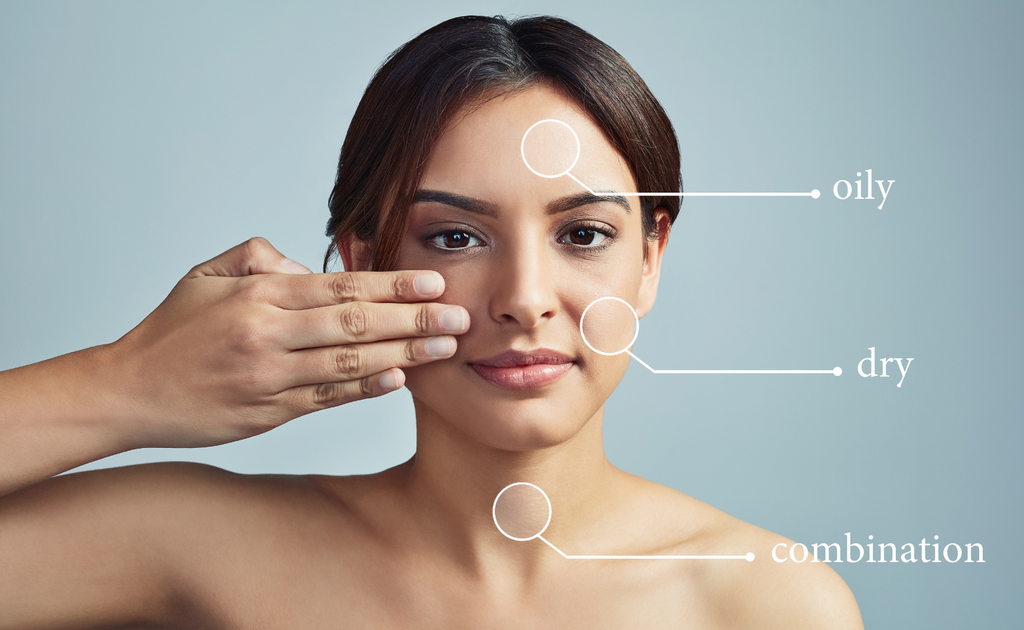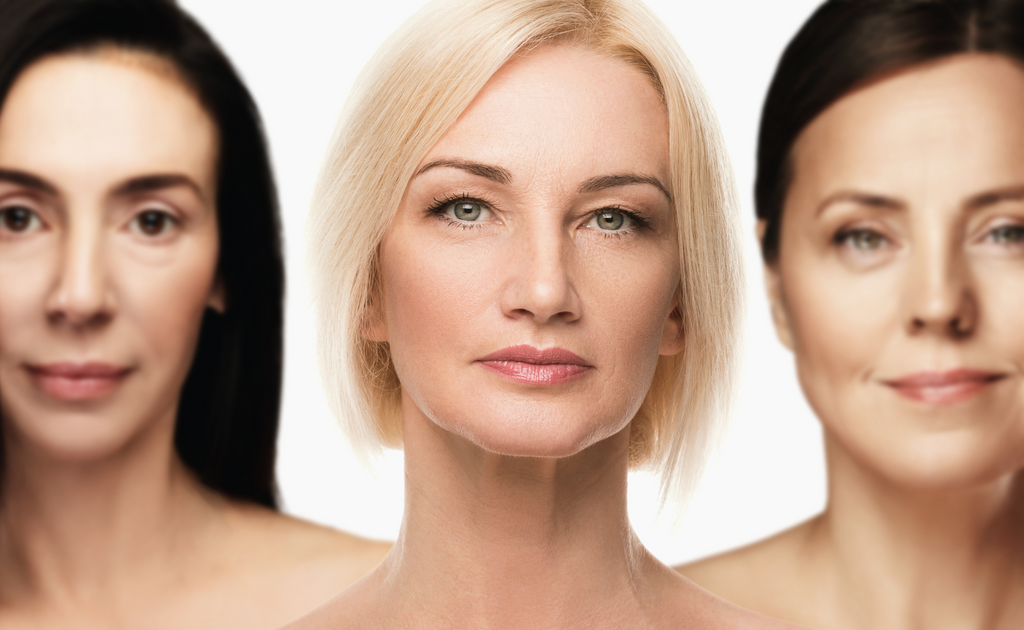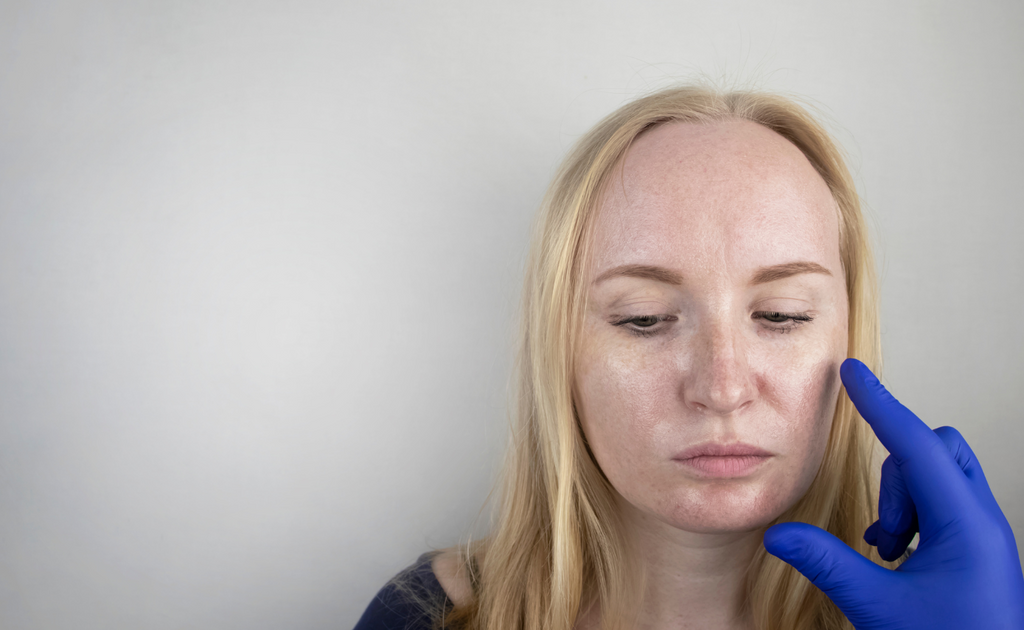A Comprehensive Guide To Identifying Your Skin Type
How to Identify Your Skin Type?
Understanding your skin type is crucial for a variety of reasons. It influences how your skin responds to different environmental stressors, how quickly it ages, and what type of products you should use. By identifying whether your skin is oily, dry, combination, sensitive, or normal, you can tailor your skincare routine to best suit your skin's specific needs and tendencies. This helps to maintain the health and vitality of your skin, preventing potential skin issues and slowing the natural aging process.
The Importance of Understanding Your Skin Type
Recognizing your skin type is not just about identifying its characteristics, but also about understanding how to care for it. Knowing whether your skin is dry, oily, combination, sensitive, or normal can guide you in choosing the right skincare products. Each skin type has unique needs, and by identifying your skin type, you can select products that are formulated to address these needs specifically. More than just picking the right products, this knowledge also empowers you to establish the most effective skincare routine. This way, you can ensure your skin stays healthy, glowing, and resilient against potential issues while slowing down the signs of aging.

What are the Different Types of Skin?
The three main skin Types:
Normal skin type is well-balanced — it's neither too oily nor too dry. Individuals with normal skin typically have few imperfections, a radiant complexion, and pores that are barely visible.
Dry skin can feel tight and rough and appear dull. It has a tendency to develop fine lines and wrinkles more easily, and may have red patches. Its pores are almost invisible, and it might have less elasticity.
Oily skin produces excess sebum, leading to a shiny appearance and often larger, more visible pores. It's more prone to acne, blackheads, and whiteheads due to this increased oil production.
Combination skin is characterized by varying conditions on different areas of the face. Typically, there's oiliness on the 'T-zone' (forehead, nose, and chin) while the cheeks and other areas might be normal or dry.

Subcategories within Skin Types: Sensitive and Mature Skin
While it's essential to understand the basic categories of skin types, it's equally important to acknowledge the subcategories, which include sensitive skin and mature skin. These subcategories can exist within any of the basic skin types — normal, oily, dry, or combination.
Sensitive Skin
Sensitive skin is highly reactive and can be easily irritated by certain skincare products or environmental factors. If your skin frequently experiences redness, itching, burning, or dryness, it might fall into the sensitive subcategory.
Mature Skin
Mature skin is a term usually applied to skin that shows signs of aging, such as wrinkles, fine lines, or loss of elasticity. It requires special care and products targeted at enhancing cell regeneration and improving skin elasticity. Remember, mature skin can also be normal, dry, oily, or combination; the key is to adjust your care routine accordingly.

How to Identify Your Skin Type?
Methods for Identifying Your Skin Type
There are several methods you can use to identify your skin type:
The Bare-Faced Method
This method involves washing your face with a mild cleanser and then patting it dry. Do not apply any skincare products, and leave your skin bare for about an hour. Then, observe your skin. If your face feels tight, your skin is likely dry. If there is noticeable shine on your forehead and nose, your skin is probably normal/combination. If there is shine on your cheeks in addition to your forehead and nose, you likely have oily skin.
The Blotting Sheet Method
This method is quick and often quite effective. Simply pat a blotting paper on the various areas of your face. Then, hold the sheet up to the light to determine how much oil is visible. If the sheet picked up little to no oil, you likely have dry skin. If the blotting sheet reveals oil from the forehead and nose areas, your skin is normal/combination. Finally, if the blotting paper is saturated with oil, it is extremely likely that you have oily skin.
The Professional Consultation
If you're finding it difficult to accurately identify your skin type, it might be time to seek a professional opinion. Dermatologists have specialized equipment and expertise to assess your skin condition and determine your skin type. They can also provide valuable insights into the care and treatment of your specific skin type.
Remember, everyone's skin is unique and can change over time or due to various factors such as climate, diet, and age. So, it's essential to reassess your skin type regularly to keep your skincare routine as effective as possible.

Physical Appearance: Oily or Dry Areas, Visible Pores, etc.
Observing the physical characteristics of your skin can provide valuable insights into your skin type. Here's what to look for:
Dry Areas
If you notice that your skin often feels tight, rough, or appears dull, this could signify that you have dry skin. You might also observe visible fine lines, wrinkles, or red patches. Furthermore, if your pores are almost invisible and your skin has less elasticity, these are all indicators of dry skin.
Oily Areas
On the other hand, if your skin frequently looks shiny, especially in the T-zone (forehead, nose, and chin), and you have larger, more visible pores, this could point to an oily skin type. Those with oily skin are also more prone to acne, blackheads, and whiteheads due to increased oil production.
Combination Areas
Combination skin can be a bit trickier to identify. You might experience oiliness in the T-zone, while your cheeks and other areas could be normal or dry. This skin type might exhibit characteristics of both oily and dry skin, and the conditions can vary across different areas of your face.
Remember, these physical signs are just indicators. Your skin may behave differently under different circumstances, influenced by factors such as weather, diet, stress, and hormonal changes. It's always a good idea to consult with a skincare professional if you're unsure about your skin type.

Sensing Through Touch: Roughness, Texture, etc.
Touch is another vital sensory method to understand your skin type. When you gently run your fingers over your face, you may feel certain textures that could indicate a particular skin type.
Roughness
Roughness often signifies dry skin. If your skin feels scaly, patchy, or has a sand-like texture, it's likely suffering from dryness. On the other hand, smooth and soft skin is typically a sign of well-hydrated and balanced skin.
Oiliness
Your skin might feel slightly slippery or have a greasy texture if it's oily. This is due to the excess sebum production that characterizes oily skin. Oily skin often feels moist to touch, particularly in the T-zone area.
Combination
If your skin feels a mix of oily and dry in different areas, you probably have combination skin. Your T-zone might feel oily, while your cheeks and other parts of your face might feel rough or dry.
Tactile observations are a great way to understand your skin better. However, remember that touch should always be gentle to avoid harming your skin or causing breakouts. If you're unsure after a touch test, a dermatologist can provide a more accurate analysis of your skin type.
 Sensitive skin types should avoid products containing potential irritants such and it's also advisable to patch test new products before applying them all over the face.
Sensitive skin types should avoid products containing potential irritants such and it's also advisable to patch test new products before applying them all over the face.
Sensitivity: Reactions to Certain Products or Ingredients
Skin sensitivity is typically indicated by how your skin reacts to certain products or ingredients. If you have sensitive skin, you may experience itching, redness, burning, or dryness shortly after applying a product. It's worth noting that sensitive skin can react not only to harsh chemicals but sometimes even to natural ingredients.
There are some common culprits known to cause irritation for those with sensitive skin, such as fragrances, sulfates, alcohol, and certain oils. It's crucial to always patch test a new product on a small area of skin before fully incorporating it into your skincare routine. This can help you identify any potential adverse reactions without affecting a large area of your skin.
Remember, if a product causes any uncomfortable sensation or visible irritation, it's best to stop using it immediately and consult with a dermatologist or skincare professional. They can help you pinpoint the problematic ingredient and guide you towards alternatives that will be more gentle on your skin.
Listening to Your Skin: The Importance of Observing Responses
One of the most critical aspects of skincare is understanding your skin's unique responses to various elements - whether it's products, ingredients, or even environmental factors. Our skin is a living, breathing organ, and just like any other part of our body, it communicates with us.
If a product causes redness, a burning sensation, or breakouts, it's your skin trying to tell you that something isn't right. Conversely, if your skin feels soft, plump, and radiant after using a product, it's a sign that your skin is responding positively to that particular product or ingredient.
 You identify normal skin by its smooth and even texture, with small pores that are barely visible.
You identify normal skin by its smooth and even texture, with small pores that are barely visible.
The same concept applies to environmental factors. For example, your skin might react differently depending on the weather. You might notice your skin getting excessively dry during winters, or you may experience an increase in oil production during the hotter months. These are all signals that your skin is reacting to the environment and might need different care accordingly.
In essence, paying attention to your skin's responses can guide you in building an effective skincare routine that caters to your skin's specific needs. It's like having a conversation with your skin, where noticing and understanding its responses can help you maintain and improve its health and appearance. So, always listen to what your skin is trying to tell you—it's the first step towards achieving healthier, happier skin.
Normal Skin
Normal skin typically appears clear with a smooth texture. It's neither overly dry nor excessively oily. The pores on normal skin might be visible but not large or clogged. In terms of elasticity, normal skin has a good balance, maintaining a well-hydrated and supple appearance. The complexion is generally even, with little to no blemishes and a healthy, radiant glow.
In terms of how it feels, normal skin feels balanced to the touch. It won't feel rough or tight as dry skin does, nor will it feel greasy or moist like oily skin. Instead, it feels supple and smooth, indicating a well-maintained hydration level.
It's important to remember, however, that even normal skin requires proper care and attention to maintain its balance and keep it in good health. Regular cleansing, toning, moisturizing, and sun protection should be integral parts of a skincare routine for normal skin.
 Flaky skin is often a result of dry skin or environmental factors such as cold weather.
Flaky skin is often a result of dry skin or environmental factors such as cold weather.
Dry Skin
Dry skin is often characterized by a dull, rough complexion, and may appear flaky or scaly. It lacks the suppleness of normal or oily skin and may have almost invisible pores. Due to inadequate moisture, it may exhibit more visible lines and wrinkles. Dry skin often feels tight, especially after cleansing, and might have a rough or bumpy texture to the touch. It can also be prone to itching, redness, and a feeling of discomfort. In terms of elasticity, dry skin often lacks bounce and can feel stiff or brittle. It's important to remember that dry skin can affect any part of your body and not just your face. Care should be taken to keep it well-nourished and hydrated throughout the day.
Oily Skin
Oily skin tends to have a shiny or greasy appearance, often visible a few hours after cleansing. This skin type is characterized by enlarged, clearly visible pores and a thicker, rougher texture. Due to the overproduction of sebum, people with oily skin may struggle with frequent breakouts, blackheads, and acne. The skin may look uneven and blemished, with a lack of firmness and elasticity due to the excess oil.
In terms of how it feels, oily skin often feels slick to the touch, especially in the T-zone (forehead, nose, and chin). It may feel heavy and greasy, particularly in warm or humid conditions. Despite its moist surface, it can sometimes feel slightly rough due to the presence of open pores and blemishes. It's crucial to remember that while oily skin may be frustrating to manage, it also has its benefits, such as natural protection against skin aging and environmental damage.
 Skin care tips dermatologists share can lead to no or few imperfections, resulting in facial skin glow and radiant skin without skin irritation.
Skin care tips dermatologists share can lead to no or few imperfections, resulting in facial skin glow and radiant skin without skin irritation.
Combination Skin
Combination skin presents as a mix of both dry and oily skin types, often varying across different parts of the face. The T-zone (forehead, nose, and chin) may exhibit oily skin characteristics, such as shine, large pores, and a propensity for breakouts or blackheads. Simultaneously, the cheeks and eye area might show signs of dry skin, including dullness, flakiness, and visible lines. This skin type can display a certain level of complexity due to this dual nature.
In terms of how it feels, combination skin can be quite variable, depending on the zone of your face. The T-zone might feel slick or greasy, while the cheeks and other areas might feel tight, particularly after cleansing. Managing combination skin can be a delicate balancing act, as it involves catering to the contrasting requirements of both dry and oily skin areas.
Sensitive Skin
Sensitive skin is a skin type that is more prone to inflammation or adverse reactions due to various factors such as environmental conditions, certain skincare products, or diet. It often feels dry and is marked by redness, itchiness, and burning sensations. This type of skin can easily react to allergens, irritants, or harsh weather conditions, causing discomfort and inflammation.
In terms of how it feels, sensitive skin may range from mildly uncomfortable to extremely irritable depending on the severity of sensitivity. The skin might feel tight or tender to the touch, especially after exposure to sun or wind, or after using certain skincare products. Dealing with sensitive skin requires a great deal of care and attention, including a gentle skincare routine and avoiding known irritants.

Mature Skin
Mature skin is characterized predominantly by the natural aging process. Physically, it may display signs such as fine lines and deep-set wrinkles, loss of firmness and elasticity, thinner texture, and age spots or hyperpigmentation. The skin might also appear drier due to diminished oil production, giving it a somewhat dull or lifeless appearance. In terms of how it feels, mature skin might feel less supple and firm to the touch, and it may also exhibit dryness or flakiness, particularly in colder weather or low-humidity environments.
Caring for mature skin involves catering to its specific needs, such as providing extra moisture and nourishment, protecting it from environmental damage, and using targeted treatments for age-related concerns. However, it's important to remember that while mature skin may need more specialized care, it's still essential to follow a consistent skincare routine for overall skin health.
Conclusion
Understanding your unique skin type is crucial in developing an effective skincare routine that caters to its specific needs and concerns. By identifying your skin type, you can choose products and treatments that work best for you and avoid potential irritants or ineffective solutions. However, it's essential to note that your skin type may change over time due to various factors such as aging, hormonal fluctuations, or lifestyle habits.
 Using gentle cleanser can help to control oily skin as well as using oil-free moisturizers and makeup.
Using gentle cleanser can help to control oily skin as well as using oil-free moisturizers and makeup.
Skin care for different skin types may vary, but some general tips apply to all. These include staying hydrated, maintaining a healthy diet and exercise routine, protecting your skin from the sun, regularly cleansing and exfoliating, and using suitable products for your skin type. With proper care and attention, you can achieve healthy, radiant skin that looks and feels its best every day. Remember to listen to your skin, treat your skin gently, maintain, skin's protective barrier and nourish it with love. So, take some time to get to know your skin type, and give it the care it deserves! The result? Beautiful, glowing skin that radiates confidence and self-love.
